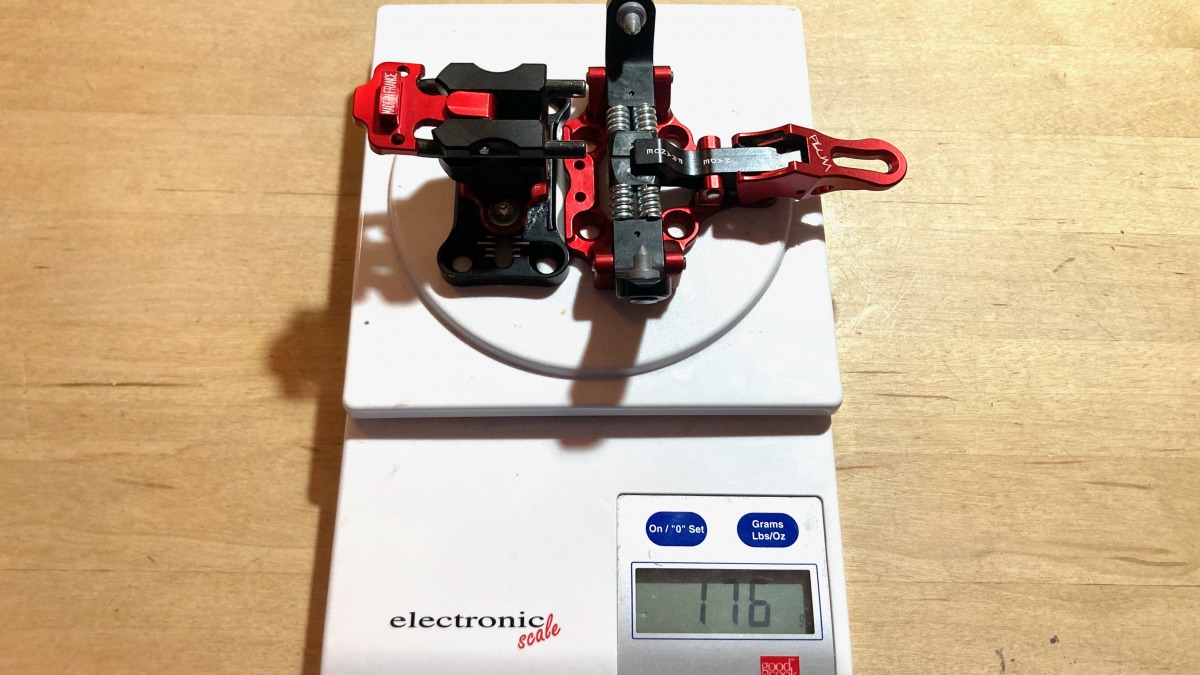
The first look starts with the weight, which is spot on to the bindings name: The Plum R170 at 176g sans screws.
Fixation Plum, manufacturers of Plum bindings, is France-based and rooted about equidistant between Geneva and Chamonix. They are proprietors of tech ski bindings (splitboard too) that, like some of their Euro competitors, fabricate metal with attributes in mind: functionality and eye candy. The latter is immaterial to safe and efficient skiing but is a bonus.
Let’s start with the superficial to get that over with. This first look at the Plum R170 binding draws the eyes straight towards the red. It’s a metallic red with a hue not trending towards candied but pivoting more towards the racy, and pardon the nod to Italy, but Ferrari-like. The red aluminum is offset tastefully by black parts, including the adjustment plate.

The Plum R170 toe with a time tested double spring on both sides of the pins.
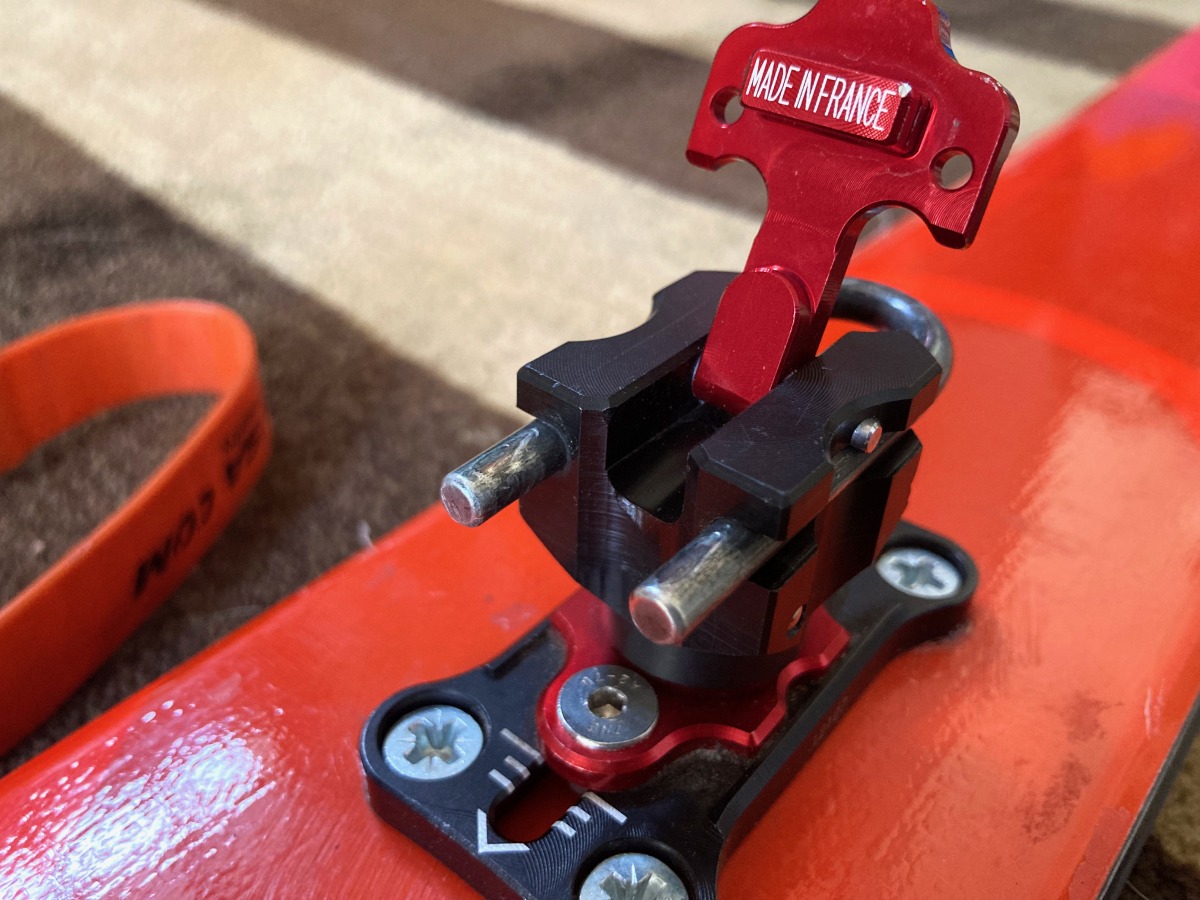
The heel sports a fixed released U-spring at a rated 8 for vertical and lateral release.
And although I derisively want to butcher Plum and call it a nasally “plum,” one look at these beauties and you’re more likely to say “plume” with an emphasis on the “oooh,” like a wisp of snow, or a plume of snow, kissing the sky as it sweeps off a Mont Blanc ridge. And Plum means feather in French, which is apt for goods weighing so little.
Cutting to the chase, these bindings are verified at 176g (heel + adjustment plate + toe) sans screws and ski crampon slots, which add another 10g. So yes, in the spectrum of feathers, this qualifies as feather-light for a go-to touring binding.
The machining is precise. The binding is mostly constructed from 7075 T6 aluminum with a plastic POM heel body, and steel U spring; the machining illustrates value-added attention to detail. Weights savings are made by cutting out and removing aluminum in spots to create an airy-looking toe piece; the toe piece center loses a few grams as it is punched out. The front two screw holes are connected to the main body toe lever with a relatively thin arm metal, giving this a wispy look. Knowing that I’m in a lightweight grabber, I suppose you’ve got to cut the weight somehow.

The Plum R170 is simply a Plum R150 (their race grabber) with an aluminum adjustment plate for the heel.
This brings us to minimalism, which this binding is minimalist. The R170 is simply a Plum R150 with a 25mm adjustment plate. The R150 is marketed as a race binding which Plum says is “or new skimo skiers or those who want to compete with the bests.” That’s not me. But I do like the minimal weight on the ups.
The basics stats are this:
Weight: 176g
Lateral release value: fixed at 8
Vertical release value: fixed at 8
Construction: CNC machine construction (no molding)
Riser positions: 0 & +41mm
Made in: France
Price: MSRP $439
Rear binding adjustment for skiing: flat mode (rotate 90 degrees from pins forward), and 41mm riser. The riser can be flipped over the pins, for a straight-up race mode or over the back of the steel U spring, which I think adds a few more millimeters of height. But it’s not discernable.
Toe height – heel height difference: ~+4.3mm. The caveat here is that the delta angle will change depending on your BSL. I tested this with 27/27.5 boots in the 297mm BSL arena. The general rule of thumb is that a more aggressive delta will put you forward a bit. And depending on the forward lean of your boot, all that can amount to too much forward lean. The R170s sit are in a nice position for my comfort— not too aggressive with little undue fatigue in the quads. The R150 (shares the same heel but no adjustment plate) and sports a delta of +1, so basically flat.
As noted in the stats/specs, the R170 is racier than bindings with a conglomerate of adjustments and add-on features. Its feature set is on a diet. For example, there are no two independent pins in the heel offering elasticity like in some heavier light-touring bindings. It’s a basic steel (for greater durability over titanium which wears faster) U-spring with no adjustability: both lateral and vertical release are fixed at what Plum calls 8. Plum states the R170 is for skiers in the 70kg-90kg range: I’m about 71kg, or pushing 160 lbs. My values are usually in the 8-9 range with bindings offering adjustability. So the R170 works for me.

Flat mode on the R170. The heel unit must be turned 90 degrees to go from pins forward/race mode riser to flat.
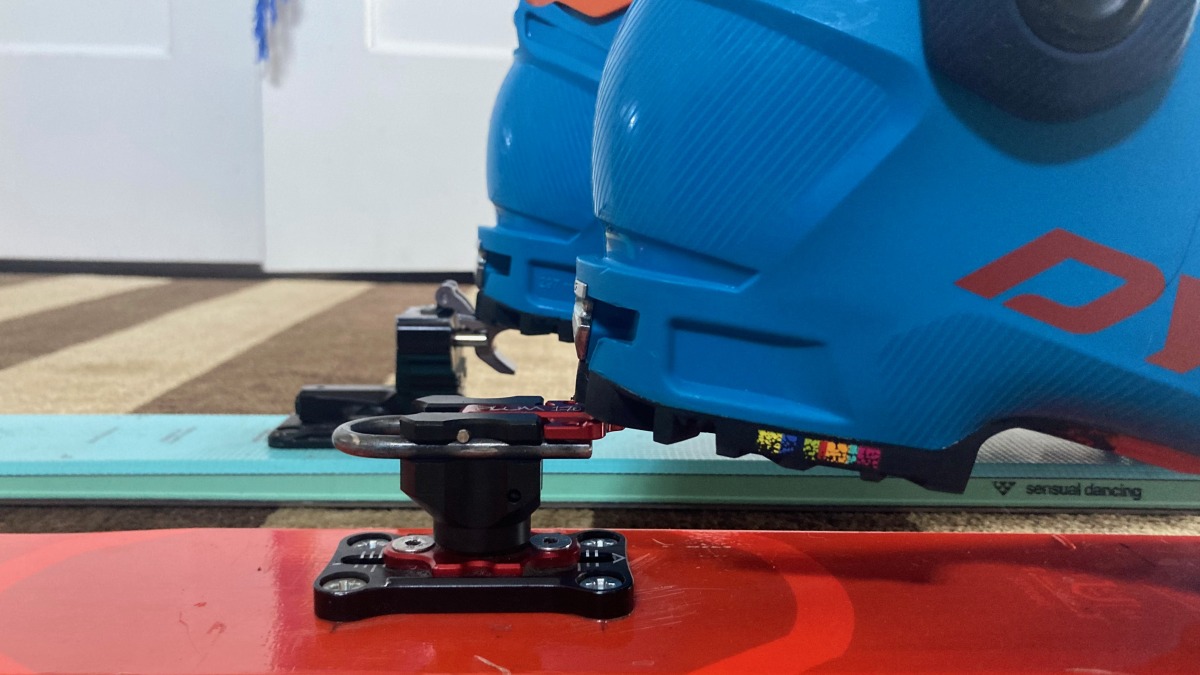
A comparison of the R170 with the riser engaged (flipped over pins) and the low riser on the BD Helio 200LT in the background.
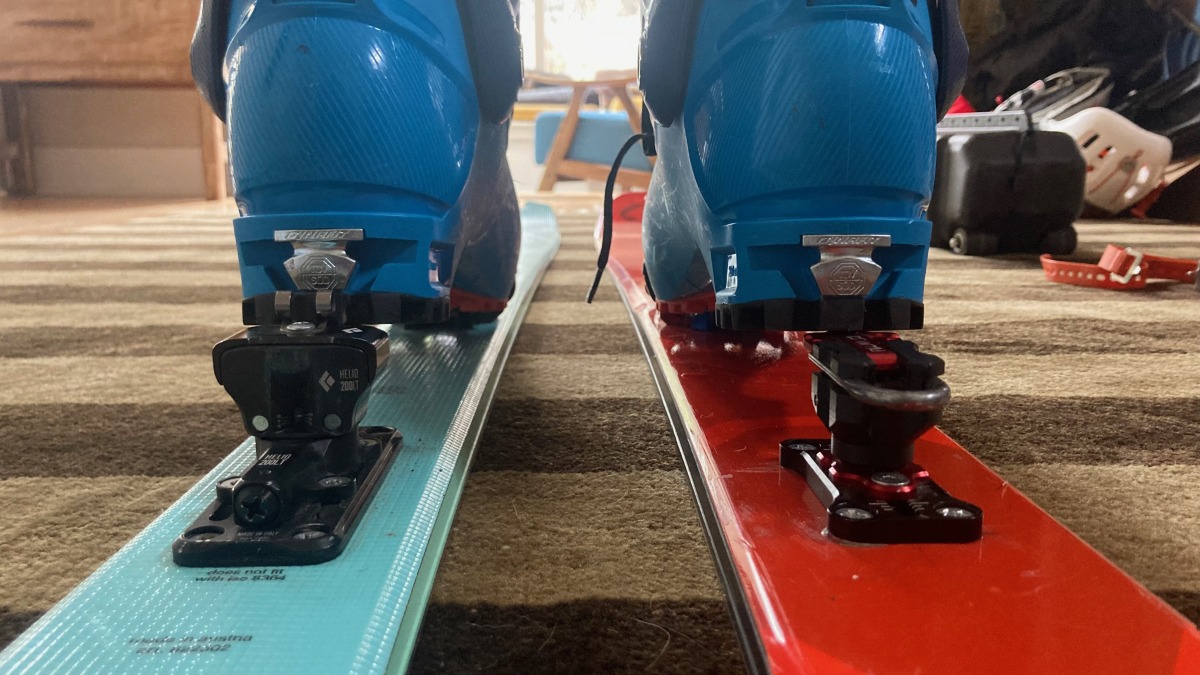
A comparison of the R170 (right) with the riser engaged (flipped over pins) and the low riser on the BD Helio 200LT (left).
Call it a race-bred heel unit. Flat mode to riser mode to ski mode requires a spin of 90-degrees to engage. But oh man, rotating the heel unit is no chore. Do not be scared off if you dread spinning a heel unit to access different modes. The high craftsmanship is evident as it’s no problem to bend over a bit on the skin track as it kicks up and spin the heel unit, a satisfying “click” accompanies the twist.
And clicking into the U-spring? No problem. It requires regular effort, no over-exerted slam-your-heel-down action to engage.
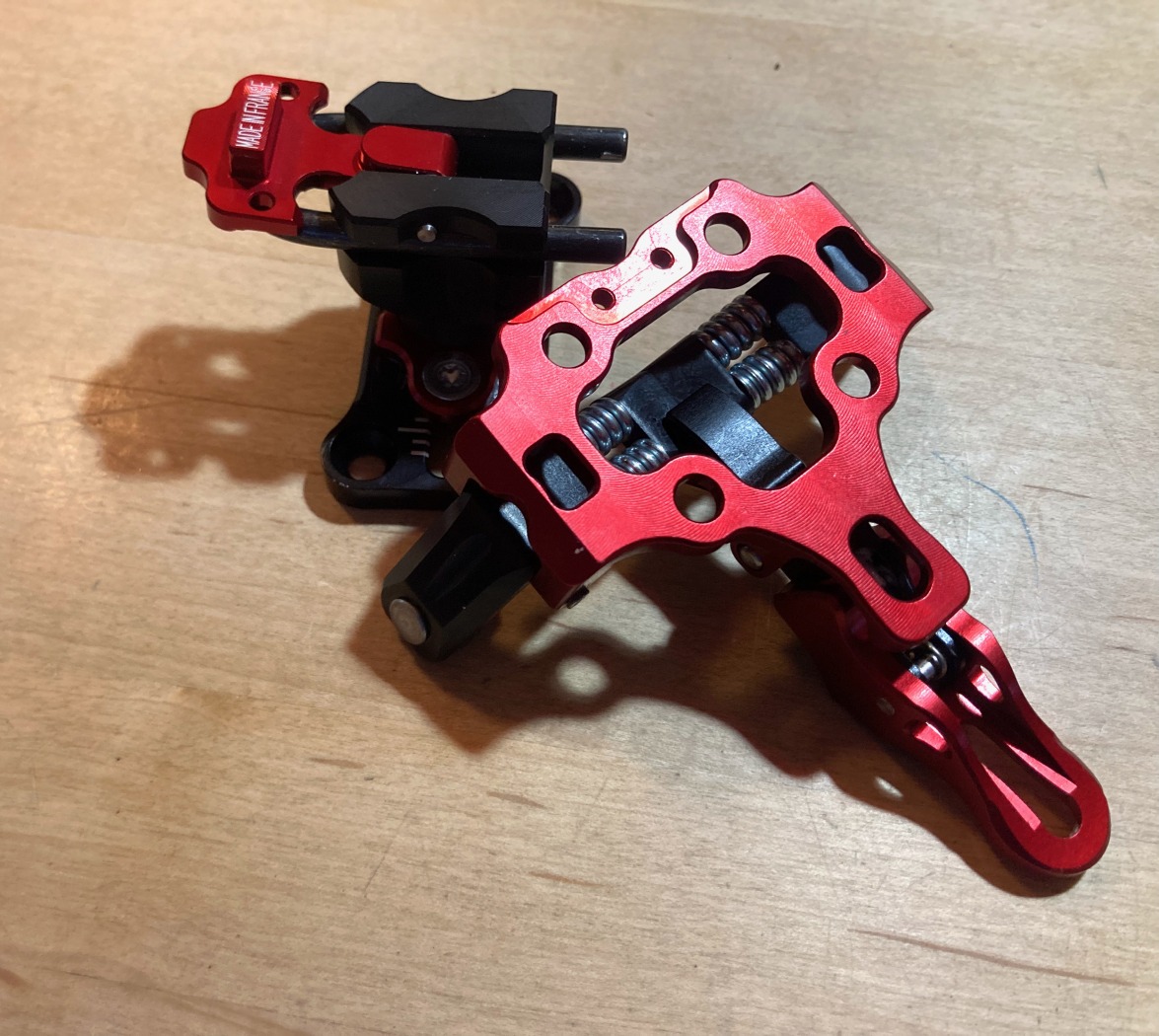
The underside of the Plum R170’s toe.
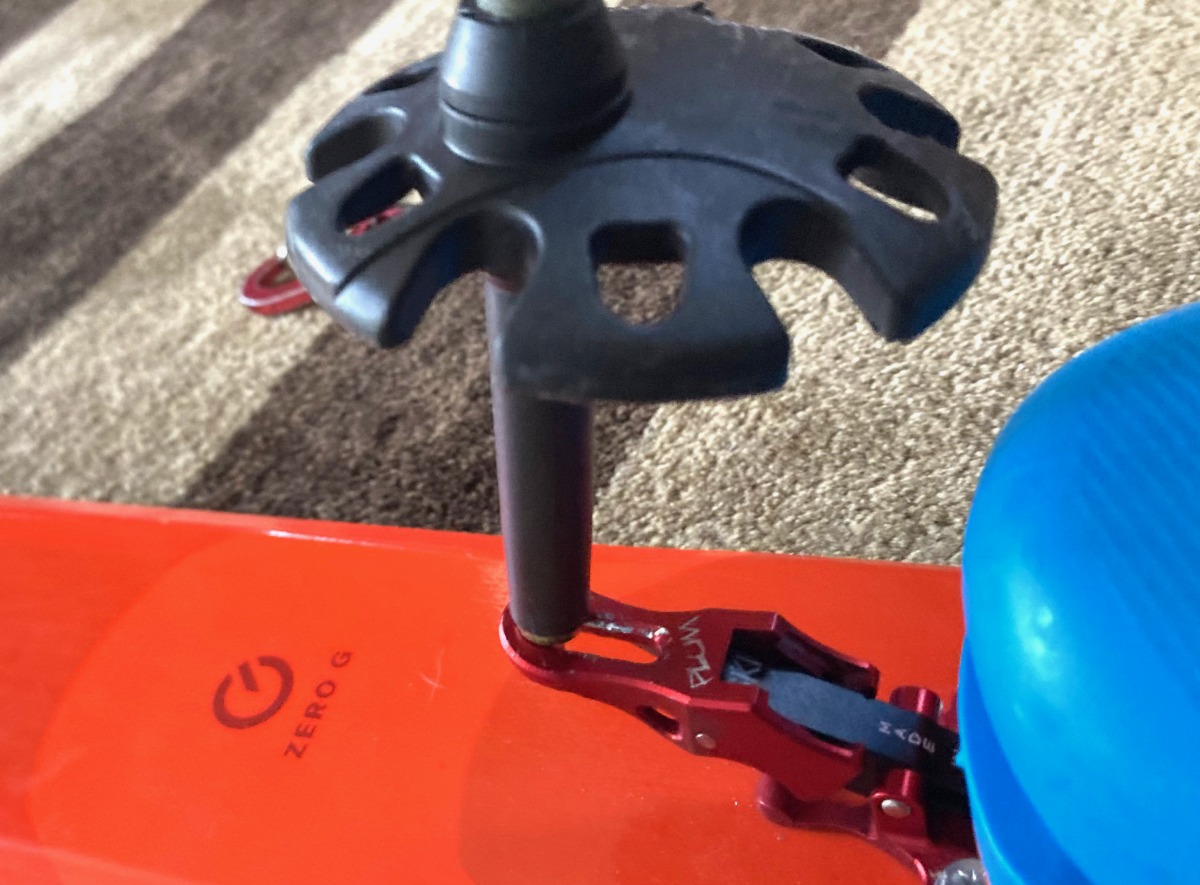
Thank you Plum for the user friendly just-wide-enough toe lever that is so easy to set the pole tip in and press.
Although selectively cut out to reduce weight, the toe piece seems robust for the time being. It’s a tried and true four spring design. Like twisting the heel, the toe lock lever is oh so satisfying to engage. Pull up to lockout for skinning or some ski situations, or click in and go.
One design feature I love is the cut-out toe lever. It’s wide enough that my ski pole tip seems to guide itself into the void; I press down and easily release spring tension and step out. Admittedly, I don’t have the best eyesight. I’m in many different ATK setups. I have a tough time nailing my pole tip on their toe lever in one or two tries. The third time is usually the charm. With the R170 lever—it’s like the tractor beam from a fine-tuned galaxy far, far away. It’s easy to use a pole tip to find the toe lever.
Past iterations of the R150 and R170 have had flawed toe lever mechanisms. Some skiers report that once locked out, they could not disengage. A position that’s uncompromising, to say the least. This R170 has a redesigned lever, and as far as I can tell, no issues have arisen. This is also worth bringing up; the binding, in ever-evolving iterations, has been around for a claimed ten years.

The toe lever pulled up and locked out for skinning or spicy no fall skiing.
I did add on a small ski crampon slot. For those used to G3 or Dynafit ski crampon integration, this is a bit different. Compared to the Dynafits, one does not slide the crampon into the slot, you drop the crampon in near vertically and rotate down. Super elegant and easier than the Dynafit slide-in mechanism. I’ve had a few occasions where I need to de-ice the slot, but otherwise, I prefer it.
I have the binding mounted on a 2022-2023 Blizzard Zero G 95 (171cm) for what has turned out to be a lovely romance between minimalist binding and jump turn and firm-snow-friendly ski. High praise for this combination. But more on that later in the season.
An obvious downside for some who want a U-spring with lower or greater retention values is that they are not currently offered. Other bindings in this class do offer U-springs with different values.
Jason Albert comes to WildSnow from Bend, Oregon. After growing up on the East Coast, he migrated from Montana to Colorado and settled in Oregon. Simple pleasures are quiet and long days touring. His gray hair might stem from his first Grand Traverse in 2000 when rented leather boots and 210cm skis were not the speed weapons he had hoped for. Jason survived the transition from free-heel kool-aid drinker to faster and lighter (think AT), and safer, are better.
